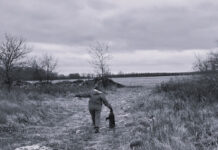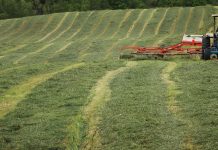The Northeast region of the United States has more than 15,000 working dairies, each producing non-saleable waste milk.
Waste milk contains excess colostrum, transition milk, mastitic milk, or antibiotics. Many dairy producers feed waste milk to dairy calves, however, sometimes the amount of waste milk is in excess of what can be used resulting in it being disposed. Feeding waste milk to other species provides a viable option for dairy producers to use the product rather than waste it.
Option for pigs
For a pig, weaning is thought to be the most stressful time of its life, as it transitions from a completely liquid diet to a completely dry diet. Waste milk may serve to ease this transition to dry feed while keeping the pig hydrated.
Penn State research
To determine the efficacy of waste milk as a supplement for nursery pigs, a study was conducted at the Penn State University swine farm using 214 purebred Yorkshire and crossbred pigs. Pigs were weighed at weaning and allocated so that each of the two treatments had equal average pig body weight, nurse sow parity and age.
Treatments included: 1. Unlimited access to a standard four-phase nursery diet; and 2. Unlimited access to the same four-phase nursery diet plus waste milk supplemented at a rate of 3% of total pen body weight.
Twelve nursery pens (six pens per treatment) were used in this 35-day study. Milk was collected in five-gallon jugs at the Penn State dairy each morning at 8 a.m. and immediately taken to the swine farm. Each jug were cleaned upon arrival at the swine farm so that biosecurity was not compromised.
Milk was weighed individually per pen and distributed two pens at a time. Milk was placed in at least two wide-bottom feed pans per pen to help decrease spillage. Any milk not consumed was weighed back and recorded to determine milk refusal. Feed was also weighed in to the feeder and refusals were weighed back to determine average daily feed intake.
Pigs were weighed at study initiation and every seven days until the trial ended to determine average daily gain and feed efficiency.
Bottom line
The results of this study indicate that supplementing waste milk during the first 35 days of the nursery phase did not affect average daily gain. Over the entire 35 days, average daily feed intake was lower for pigs offered waste milk compared to those not consuming waste milk. This was primarily due to reductions in dry feed intake among those pigs the last two weeks of the experiment.
Feed efficiency was improved for the study duration due to the reduction in average daily feed intake among pigs consuming waste milk.
Feed cost savings
Feed costs are largest expense of total swine production costs, so it was important to calculate the cost of dry feed during the first 35 days of the nursery period in this study. A savings in feed cost was anticipated because pigs were expected to replace dry feed with waste milk.
The 35-day feed cost for pigs not offered waste milk was $11.6 per pig and $10.9 per pig for those offered waste milk. The feed costs were based on January 2015 feed prices and the assumption that waste milk was no cost to the producer. This is a substantial savings in dry feed costs during a time of peak diet cost.
This research was designed to determine the value of feeding waste milk only during the nursery phase of pig production. It is not recommended to feed waste milk during the finishing phase of pig production because it does contain antibiotics. In a densely populated dairy area such as Pennsylvania, waste milk is an inexpensive and readily available byproduct that improves feed efficiency and lowers dry feed costs during the nursery phase.
(Tyler Coufal contributed to this research)
(Dr. Sara K. Linneen is an assistant professor in the Department of Animal Science at Penn State University where she specializes in applied livestock nutrition and management. She can be reached at skl15@psu.edu.)












